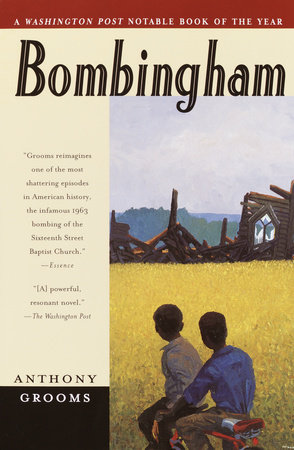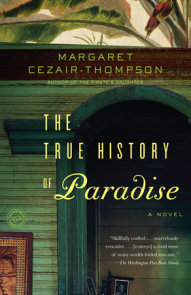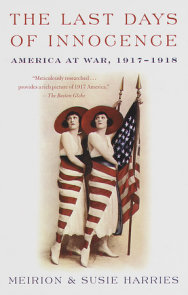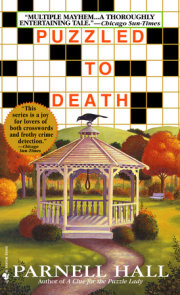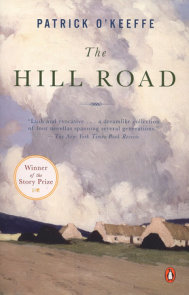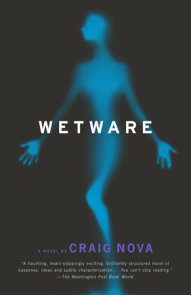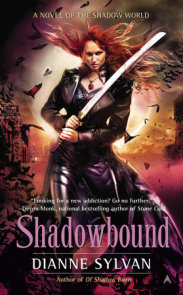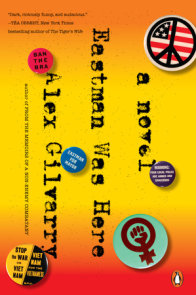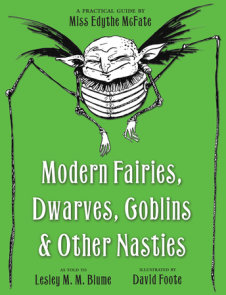TEACHING GUIDE
NOTE TO TEACHERS
(Scroll to the bottom of this page to download a PDF version of this teacher’s guide.)
In Bombingham, acclaimed author Anthony Grooms vividly brings to life the turbulent period in American history when racially motivated violence rocked the city of Birmingham, Alabama. Through the compelling narration of Walter Burke, a troubled young soldier caught in the crossfire in Vietnam, Grooms examines the complex intersection of segregation, civil rights, and racism in one city’s past. As Walter recalls his own involvement as a child marcher in Birmingham in 1963 and revisits the sacrifices made by members of his family in their quest for equality, Bombingham opens students’ eyes to the many kinds of injustice in our nation and the world at large.
ABOUT THIS BOOK
Inspired in part by the stories told to him by his wife and her family, Anthony Grooms’s Bombingham reads as much like a memoir of life in Birmingham, Alabama in the 1960s as it does a work of fiction. Grounded in the historical context of the civil rights movement around the time of the 1963 bombing of the Sixteenth Street Baptist Church, Bombingham exposes the moral crises faced by the Burkes, an ordinary American family trying to go on with their lives as usual during a time of local and national unrest. As Walter Burke struggles to compose a letter of condolence to the parents of a fallen soldier, a fellow Alabamian serving with him as a young adult in Vietnam, all he can think of is his childhood companion, Lamar Burrell, the friend with whom he first experienced the fury of violence on the streets of Birmingham at the height of the Civil Rights movement. The juxtaposition is so powerful— between war-torn Vietnam and terror-filled “Bombingham”—that Walter finds himself thinking back to the summer that would witness his maturation from a child to a young man, and his coming to terms with his place in the world. Walter’s efforts to understand his past force him to confront difficult memories of his mother’s
terminal illness, a family crisis that found its climax just as the violence in Birmingham was beginning to erupt.
ABOUT THIS AUTHOR
ANTHONY GROOMS was educated at the College of William and Mary and at George Mason University. He is the author of the chapbook, Ice Poems, and Trouble No More: Stories. He is the recipient of a Fulbright Fellowship, an Arts Administration Fellowship from the National Endowment for the Arts, and two Lillian Smith Awards from the Southern Regional Council. He is a professor of creative writing at Kennesaw State University in Georgia, and lives in Atlanta with his wife, Pamela B. Jackson, and their son.
TEACHING IDEAS
Bombingham’s examination of one character’s coming to terms with his role in two historically significant events—the Vietnam War and the civil rights movement—provides teaching opportunities on a wide variety of topics. The author’s detailed depiction of social conditions for black Americans in Birmingham, Alabama in the 1960s exposes students of American history to the realities of the era. The book’s focus on the uncertainties faced by soldiers during times of war enables students analyzing the Vietnam conflict to better understand that phase in American history and its effect on society. As a classic bildungsroman, or coming-of-age novel, Bombingham would be ideal for inclusion in a literature course, especially comparative literature classes that consider character development in multiple works spanning different cultures. The book’s concern with historical conflict, racial issues, and civil rights makes it a valuable addition to any humanities course. Likewise, the themes mentioned above would make Bombingham an excellent selection for common reading programs; the book has been adopted for First Year Experience programs at five colleges and universities including: Alabama A&M University, Florida A&M University, Milwaukee University, Otterbein College, and SUNY Oswego.
DISCUSSION AND WRITING
1. What role does race play in Walter Burke’s relationships with the other enlisted men in his platoon? How does Walter’s friendship with Vester and Haywood compare to his relationship with Bright Eyes? Why is Walter unable to talk openly with his fellow soldiers about his childhood experiences in Birmingham?
2. Why do Walter’s parents choose not to involve themselves in the community’s ongoing efforts to improve civil rights in Birmingham? Given their frustration with the unfair treatment of blacks by many whites, what explains their reluctance to join in the nonviolent protests? How does their unwillingness to protest their conditions impact Walter and his sister, Josie, in terms of their friendships with other children?
3. How does the revelation of his mother’s terminal illness affect Walter, and why does his father swear him to secrecy? How does Walter’s mother’s approach to treatment for her inoperable brain cancer relate to her religious faith? Discuss how her medical condition changes the domestic landscape in the Burke home, particularly with respect to Walter’s parents’ marriage.
4. To what extent does segregation impact every aspect of Walter’s childhood? You might consider his experiences at school, at play, and at home. How does he experience social restrictions on his life? How does the violence against blacks in Birmingham and much of the South become part of his consciousness as a young boy?
5. How does the author’s decision to frame Walter’s experiences in Birmingham as a child in the context of his experiences in Vietnam as an adult enable a richer appreciation of both settings? Why does Walter feel compelled to revisit his childhood in light of his letter of condolence to Haywood’s family?
6. How does Walter’s decision to share the nature of his mother’s illness with Lamar Burrell relate to the depth of his feelings for his friend? How do Lamar’s experiences of marches and nonviolent protests in Birmingham compare to those that Walter encounters, and what accounts for any discrepancies? Discuss how Walter and Lamar function as alter egos for each other.
7. Discuss the theme of violence in Bombingham. How does the city of Birmingham become more violent over the course of the novel, despite the efforts of protesters to conduct their demonstrations nonviolently? How does the escalation of domestic violence in the Burke home relate to the progression of Walter’s mother’s illness?
8. To what extent does the arrival of Walter’s extended family—his Grandma Pic, Uncle Reed, and Aunt Bennie—improve the situation in the Burke home? Why does Walter draw out the story of his grandfather’s murder from Uncle Reed, and how does it help him come to terms with his mother’s resignation to dying young?
9. Discuss the ways in which the author explores the theme of responsibility in Bombingham. How does Walter’s mother’s illness transform the responsibilities that he, his father, and his sister face? How does the social crisis in Birmingham demand new obligations of its citizens? Does Walter succeed in balancing his new sets of responsibilities?
10. How does the presence of Martin Luther King, Jr. in Birmingham further kindle the resolve of the child protesters in Bombingham? To what extent does the participation of children in the nonviolent protests seem to offer a new, radical vision for social revolution?
11. How is the problem of suffering explored in the novel? How do the papa-san and the barking dog that Walter kill in Thoybu relate to the innocent black people who are targeted by Bull Connor and his police force in Birmingham? How do the hopes and struggles of people in any given place relate to the suffering they must undergo in order to prevail?
12. Why is the fact of Bright Eyes’s race problematic for Walter in one context, but not in another? Is it fair to label Walter a racist? Discuss the reasons for the views Walter holds, and the extent to which they are justified, based on his encounters with white people.
13. How does Walter react to seeing his father humiliate himself before a white police officer, a fellow infantryman? How does his father’s decision to abase himself in order to gain Josie’s release from police custody reflect on his character? To what extent might his father’s alcoholism be a response to the challenges he faces at home and in the world?
14. How does Walter connect his dreams for himself and his family to the dreams of Martin Luther King, Jr.? Why does Walter’s mother discourage dreaming and hoping, and how does she frame those acts in terms of faith in God? To what extent do Walter’s dreams seem to be part of a greater religious belief?
15. How does the death of Lamar Burrell relate to Haywood Jackson’s death? What does Walter’s decision to address his letter to both Haywood’s parents and Lamar’s mother reveal about the associations he draws between these friends’ deaths?
16. Why does the physical description “All-American” arouse in Walter so many misgivings and resentments? To what extent does Walter feel that the expression excludes him and his fellow black citizens?
17. How would you characterize the sibling relationship between Walter and Josie? Compare and contrast their attitudes toward their mother’s illness, their parents’ marriage, and the nonviolent protests they engage in and witness.
18. How does Reverend Timmons, among others, awaken Walter’s awareness of the inequality around him? Why does Walter conceal his attendance at the nonviolent protest workshops from his teachers, classmates, and parents? What role might Walter’s difficult family situation play in his becoming increasingly passionate about race issues?
19. In his letter to Haywood Jackson’s family, Walter writes that he should have told Haywood about compassion when he described Birmingham. Discuss the meaning of this remark. What role does compassion play in Walter’s childhood experiences, and how does it connect to the kinds of suffering he and his family endure?
20. How does the book’s depiction of white authorities, particularly of Bull Connor and the Birmingham police, underscore the impossible odds Walter and other black Americans faced during the era of segregation? Why do you think the author chose not to depict any sympathetic white characters in Bombingham?
SUGGESTED ACTIVITIES
1. Remind students that Bombingham devotes the majority of its narrative to the childhood of Walter Burke, and that it frames its account in the context of his experiences as an adult during the Vietnam War. Ask students to consider how the novel would read without the sections set in Vietnam. Then ask them how it would read with more scenes set in Vietnam. How does the author’s decision to include the context of Vietnam as a frame for telling the story of Walter Burke’s childhood experiences in Birmingham impact students’ understanding of the significance of both events in the character’s life? How do these two very different settings converge over the course of the novel?
2. Discuss Walter Burke’s character development in Bombingham with students. What roles do the troubling events in his family and in the city of Birmingham play in his growth and maturation? Ask students to what extent they feel Walter has truly made the transformation from child to adult, and whether or not they can identify any particular moment in the narrative when that transformation might have occurred. Then ask students to write a short story that includes a character who faces a challenge, overcomes it, and grows from it in some way. Encourage students to anchor their character’s internal development to actual events in the story.
3. In Bombingham, the author develops the fictional story of Walter Burke in the city of Birmingham in the 1960s. Ask students to consider some of the narrative advantages and disadvantages of reading about Walter Burke, a fictional character, interacting with real-life historical figures like Martin Luther King, Jr. How does this convergence of fact and fiction inform their experience of reading the novel? Ask students to prepare short stories that combine fictional characters with figures from real life. Ask them to share their stories with one another to determine whether or not their fictional characters are enriched by their association with real-life figures.
BEYOND THE BOOK
1. Bombingham includes figures like Martin Luther King, Jr., and Reverend Fred Shuttlesworth, both of whom were active in the civil rights movement in Birmingham, Alabama. Have students research the history of this era in greater depth, with a focus on civil rights events in Birmingham. In the course of their research, students should find out more about the objectives of civil rights organizers, and the inspiration for their nonviolent protests. They should also examine the extent to which the bombing of the Sixteenth Street Baptist Church helped galvanize the movement as a whole.
2. Bombingham elaborates on the role of children in the social revolution that took place in Birmingham in 1963, but children have been motivated to effect change in many historically significant events. Ask students to research the history of the child marchers in Birmingham, and to examine the activities of children in civil rights efforts in other cities. Have students prepare an essay that examines why children have been drawn into complex political situations, and addresses the impact of their involvement.
OTHER TITLES OF INTEREST
Eyes on the Prize: America’s Civil Rights Years, 1954-1965
Juan Williams and Julian Bond
Marching in Birmingham
William J. Boerst
Parting the Waters: America in the King Years: 1954-1963, Taylor Branch Reporting Civil Rights, Part I: American Journalism 1941-1963
Clayborne Carson, David J. Garrow, Bill Kovach, and Carol Polsgrove
The Wheels of the Birmingham Civil Rights Movement
Donald M. Crawford, Sr.
Trouble No More: Stories
Anthony Grooms
The Dream: Martin Luther King, Jr., and the Speech that Inspired a Nation
Drew D. Hansen
Miracle in Birmingham: A Civil Rights Memoir, 1954-1965
W. Edward Harris
A Fire You Can’t Put Out: The Civil Rights Life of Birmingham’s Reverend Fred Shuttlesworth
Andrew M. Manis
When the Children Marched: The Birmingham Civil Rights Movement
Robert H. Mayer
Lay That Trumpet in Our Hands: A Novel
Susan Carol McCarthy
Carry Me Home: Birmingham, Alabama: The Climactic Battle of the Civil Rights Revolution
Diane McWhorter
Four Spirits: A Novel
Sena Jeter Naslund
The Things They Carried
Tim O’Brien
Black Boy
Richard Wright
ABOUT THIS GUIDE
This guide was prepared by JULIE COOPER, a writer from Bainbridge Island, Washington. A graduate of Harvard University, Oxford University, and the University of Washington, Julie has taught beginning and advanced fiction writing at the University of Washington, and works as a freelance writer of educational materials and reading group guides for several major publishers.
Just for joining you’ll get personalized recommendations on your dashboard daily and features only for members.
Find Out More Join Now Sign In








